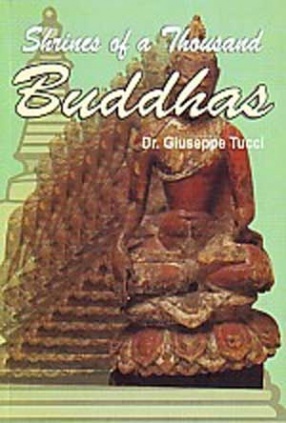
Showing all 12 books









This intriguing, thought-provoking study by one of the world’s leading authorities on the subject examines the basic doctrine behind the theory and practice of the Mandala in India and Tibet, by both Hindus and Buddhists. “As a whole,” as the author says in his Preface, ‘the spiritual background is the same: ... the yearning to find out a way from time to eternity to help the primeval consciousness... to recover its integrity” ...


In 1932 Professor Giuseppe Tucci published his fundamental work Indo-Tibetica I on the stupa in general as well as on stamped and die-cast votive stupas in Indian and Western Tibet, as a contribution to the study of Tibetan religious art and its meaning. It contains crucial results of Tucci’s field investigations and perceptions, which have been inaccessible so far to the English-reading world. The present English translation seeks to put it within the reach of ...

Part One describes the Ancient Monasteries of Spiti Kunavar, namely, those at Tabo, Lhalung, Chang and Nako, Prof. Tucci has identified the paintings of Mandalas and individual deities in the temples and elucidated their symbolism at length. The abundance of mystic meanings of the deities and cycles represented is interpreted from Sanskrit and Tibetan texts. The first chapter details the main temple of the monastic complex of Tabo, dedicated to the ...

The volume is a detailed study of Rin-chen-bzan-po, the key figure in the Later Spread of Dharma after its persecution by Glan-dar-ma in A.D. 901. Due to him it first appeared in Mnah-ris and later on spread to Dbus and Gtsan. He is famous for his translations of both the sutras and tantras, and extensive explanations of the Prajnaparamita. While Buddhism spread anew with greater purity and its understanding deepened by the new sutras and tantras, ...


Fundamentals studies on Tibetology are incorporate in the four volumes (seven bindings) of professor Giuseppe Tucci's Indo-Tibetica. As the work appeared in Italian, very few scholars have benefited by the crucial result of Tucci's investigation and percipations. Morever, Indologists hardly ever approached it, as Tucci's used Tibetan terms like mchod-rten for Stupa. The present English version of the Indo-Tibetica will placed at the disposal of ...


This volume of the Indo-Tibetica is dedicated to the six temples of Tsaparang, the temples of Samvara and of Vajrabhairava, the White temple, the Red temple, the Temple of the prefect, and the Lo-than dgon-pa. These temples are unique examples of early Tibetan mural paintings as well as sculptures, all direct derivations from Indian traditions, and some of them even from the brush of Indian masters. In the feminine deities frescoed on the walls we can discern the ...


The greatest difficulty has been found in identifying the various logical terms that occur in our treatises; but a careful comparison with the extant Sanscrit sources and the Tibetan translation of some analogous passages, as in the case of the Jati-section of the Tarkasastra, has helped me very much in finding with certainty the original Sanscrit form that was the basis of the Chinese. Since these logical terms represent some of the greatest difficulties that ...
